Succession to the Crown: King George V
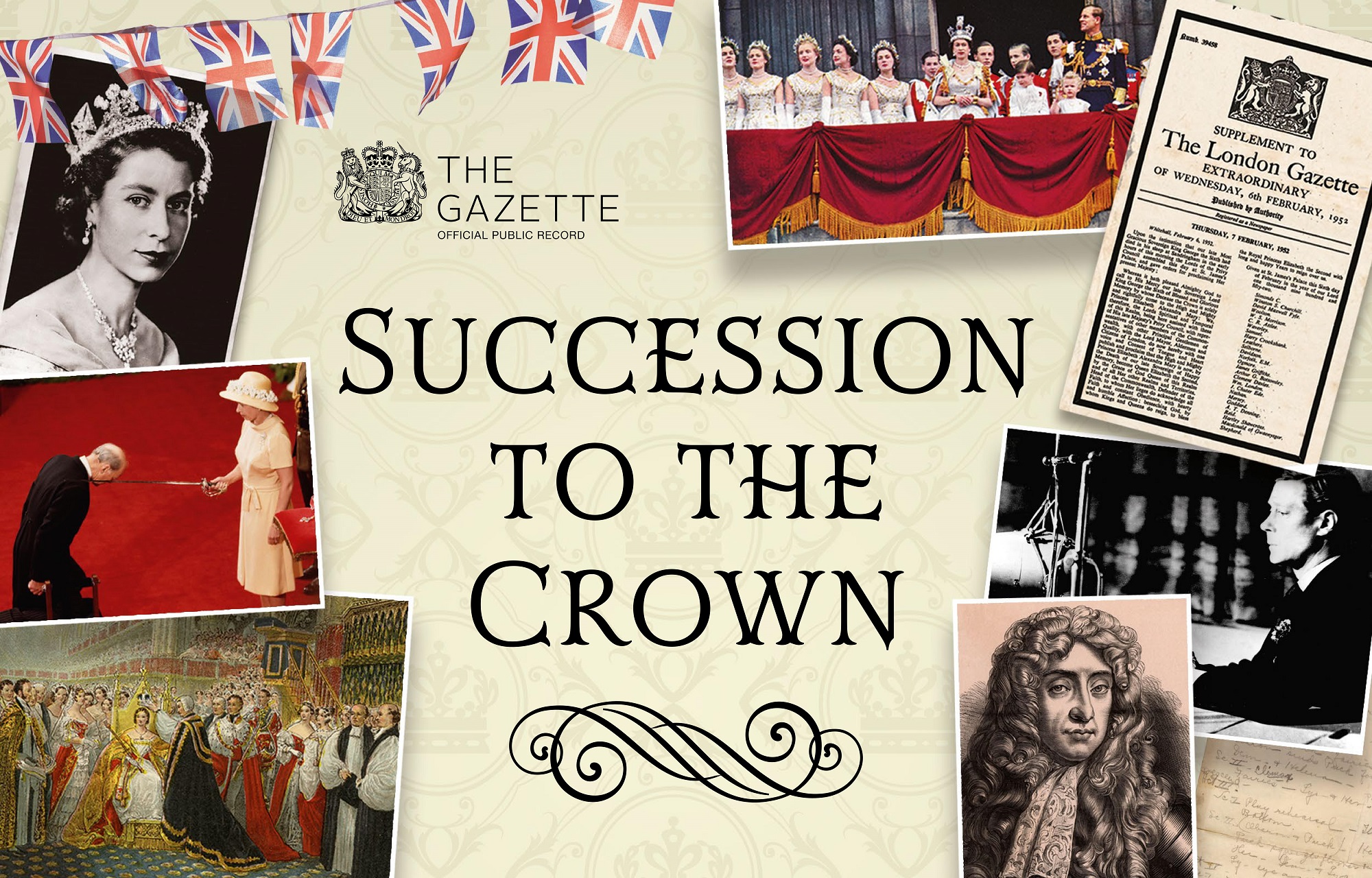
As the official public record since 1665, The Gazette has been recording successions to the Crown for over three centuries. As part of our ‘Succession to the Crown’ series, historian Russell Malloch looks through the archives at the accession and reign of King George V, as described in The Gazette.
Chapters
Succession to the Crown paperback
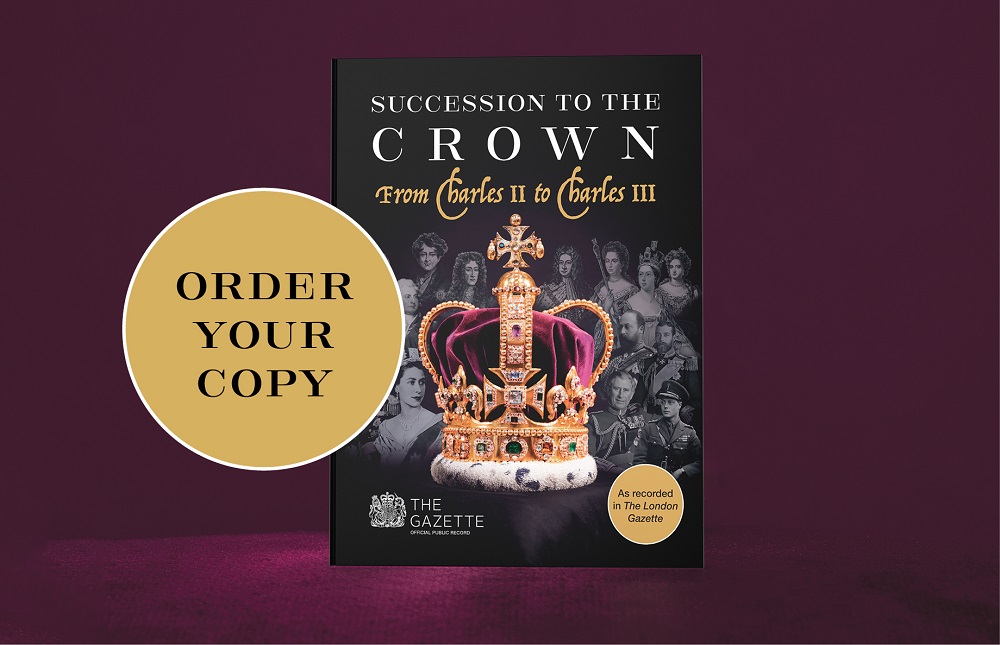
To celebrate the new king’s coronation, The Gazette’s Succession to the Crown series has been released in paperback.
Available to order now from the TSO Shop, the Succession to the Crown paperback explores the coronations, honours and emblems of the British monarchy, and includes an exclusive chapter on the accession of King Charles III.
Find out more in the link below.
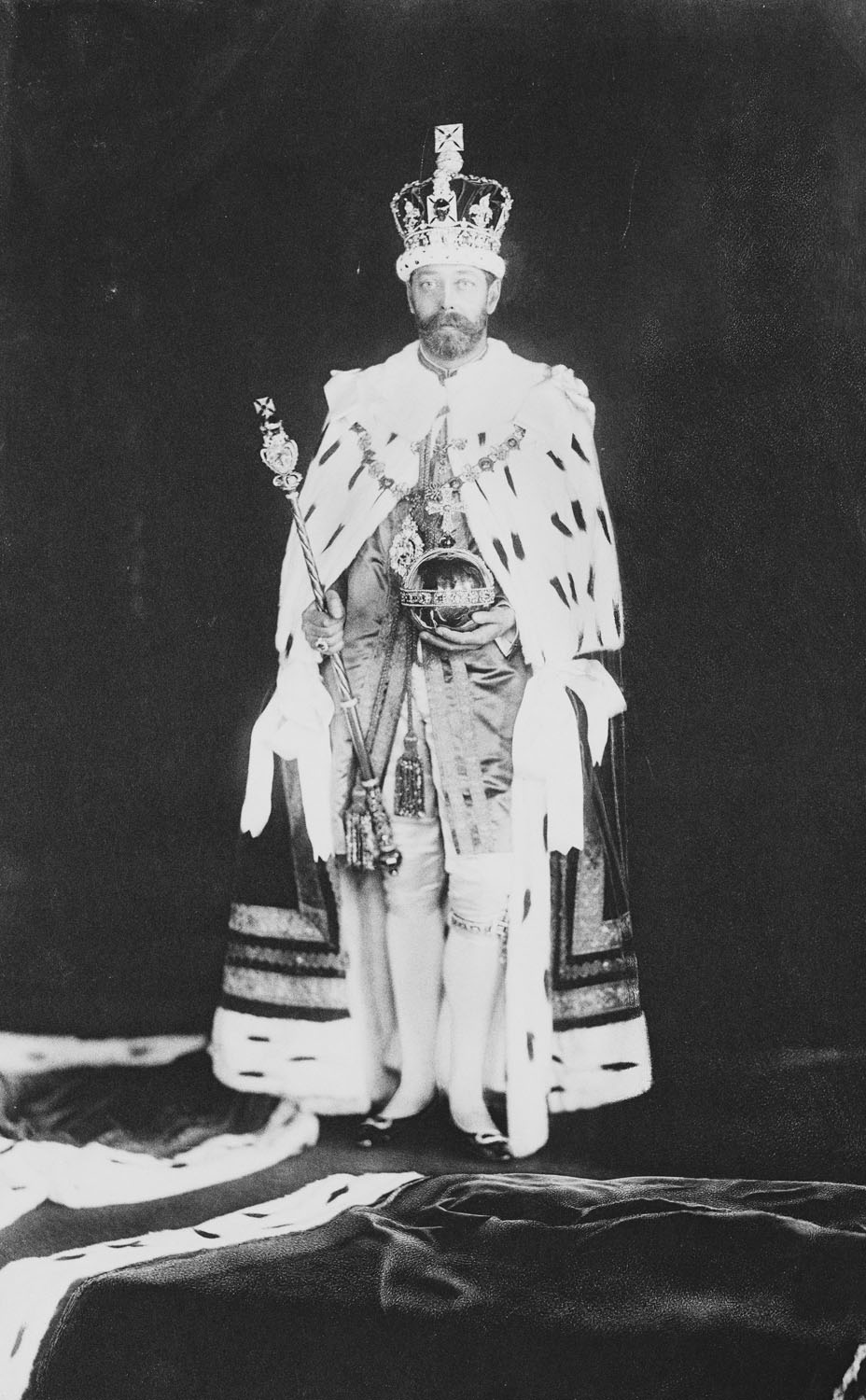
Accession measures
King Edward VII was succeeded by his son in accordance with the terms of the Act of Settlement, and the Accession Council assembled at St James’s Palace on 7 May 1910 and proclaimed that the Prince of Wales had become “King of the United Kingdom of Great Britain and Ireland, and of the British Dominions beyond the Seas ... [and] Emperor of India” (Gazette issue 28365).
King George acknowledged the altered status of the Crown in his accession declaration and referred to his reliance on the Parliament and people of the United Kingdom, as well as those in “my dominions beyond the seas”. There was, however, no prospect of the King attending an Accession Council in any, far less in all, of his other realms.
The coronation service was extended to reflect the increased importance of the British dominions, as the audience in Westminster Abbey saw standards being carried in the procession that displayed the heraldic ensigns of Australia, Canada, India, New Zealand and South Africa, each flag being borne by a senior peer such as Lords Aberdeen and Curzon, a former governor-general of Canada and viceroy of India (Gazette issue 28535).
The proclamation carried the customary signature of the archbishop of Canterbury, an office now filled by Randall Davidson, who signed along with the lord chancellor, but not the prime minister, as Asquith was on a visit of inspection to Gibraltar when news of the King’s death came through. And so it was the Earl of Crewe, a senior member of his government and leader of the House of Lords, who made the initial arrangements for the council, at the start of an era when he played a central role in some of the constitutional issues that dominated the parliamentary timetable.
Lord Crewe was the minister responsible for promoting two bills that affected the King, as well as the legislation that confirmed the relevance of the royal authority as part of the parliamentary process. He moved the second readings of the Regency Bill and the Accession Declaration Bill on 27 July and 1 August, measures that received royal assent a few days later (Gazette issue 28404). The Regency Act was required because the royal children were aged under 18 years, and Crewe explained that the King wanted “to make such provision as will, in any event, secure the exercise of the royal authority.” Queen Mary was designated as the regent should the need arise, with the usual powers and reservations. As happened with the “minority” acts that were passed between 1751 and 1840, the current statute was never called into action, as the King’s heir reached his 18th birthday in June 1912.
The Accession Declaration Act altered the words the sovereign was required to speak at the first meeting of the Parliament of his reign, by removing some of the religious bias, and so the King was able to deliver a modified declaration in the House of Lords in February 1911.
Lord Crewe also moved the second reading of the Parliament Bill in November 1910, which sought to limit the power of the Lords to amend bills that were passed by the elected House of Commons. This bill was defeated, and the regulation of the relations between the two houses of Parliament became the main issue on which the Liberals fought and won the second general election of 1910, after Asquith and Crewe secured the King’s assent to use the royal authority to create a sufficient number of peers to guard against a second Parliament Bill being defeated by any possible combination of the different parties in opposition.
Crewe was unable to take the post-election bill through the Lords due to illness, but he was one of the knights of the Garter who supported the canopy over the sovereign while he anointed, and before the King received the spurs and other symbols of royal authority that enabled him to assent to the Parliament Act in August 1911 (Gazette issue 28524).
The parliamentary struggles provided the background to the issue of the second in the modern series of coronation medals, as the precedent of 1902 was followed and medals were struck showing the effigies of King George and Queen Mary. No other additions were made to the honours system at this time, in contrast to the situation in 1902 when King Edward’s coronation was accompanied by news about the Order of Merit, the Imperial Service Order and the Royal Victorian Chain.
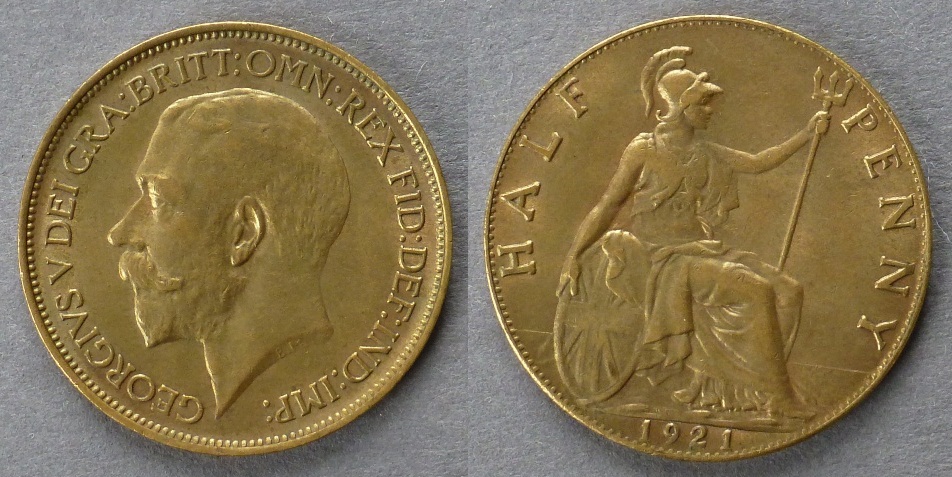
Cyphers and seals
The accession saw steps being taken, only for the second time in the modern era, to alter the royal emblems on the orders, decorations and medals that were awarded by the sovereign and, as happened after the death of Queen Victoria in 1901, the approach to the use of the new sovereign’s emblems was varied.
King Edward’s cypher remained on the badge of the Order of Merit and in the Royal Victorian Chain, but the royal jewellers such as Elkington and Garrard were commissioned to add King George’s effigy and/or cypher (G.V.R. or G.R.I.) to the Distinguished Service and Imperial Service Orders. His emblems also appeared on decorations such as the Royal Red Cross and Kaisar-i-Hind Medal, and in the Royal Victorian and Imperial Service Medals.
The royal effigy was changed on the coins and stamps of the realm, and a new great seal was prepared showing the King with figures representing justice and fortitude, and images of St Michael and St George, while the counter seal displayed a more menacing scene of the King standing on the deck of a battleship. The reference to the overseas realms also changed, as the names of the nations of the British Empire that had appeared on Edward VII’s counter seal were omitted.
Counsellors of state
The need to secure the royal authority because of the sovereign’s location, rather than the age of his children, was addressed before the coronation, after The Gazette published a proclamation which announced that the King and Queen would hold an imperial durbar in India on 12 December 1911 “for the purpose of making known the [...] solemnity of our coronation”, and that the viceroy would “take all necessary measures in that behalf” (Gazette issue 28478).
While Lord Hardinge of Penshurst, the viceroy of India, worked on the plans for Delhi, The Gazette reported the proceedings at Buckingham Palace on 10 November 1911, when the King formally declared his intention of going out of the United Kingdom, and a draft commission was read appointing four individuals to act on his behalf, under the style of counsellors of state rather than lords justices, a designation that was still relevant in Ireland, but was now mainly associated with members of the Court of Appeal (Gazette issue 28549).
The counsellors were fewer in number than the Hanoverian justices, but were drawn from a similar source, as they comprised the King’s cousin and three holders of high office who had signed the accession proclamation, namely Archbishop Davidson of Canterbury, the lord chancellor and the lord president of the Council.
The counsellors were permitted to hold meetings of the Privy Council and to signify their approval of certain measures, but were not to “grant any rank, title, or dignity of the peerage” or to act “in any matter or thing on which it is signified by us or apparent to them that our special approval should be previously obtained.” The Gazette did not indicate what matters, if any, were subject to special approval while the King was travelling around the Empire.
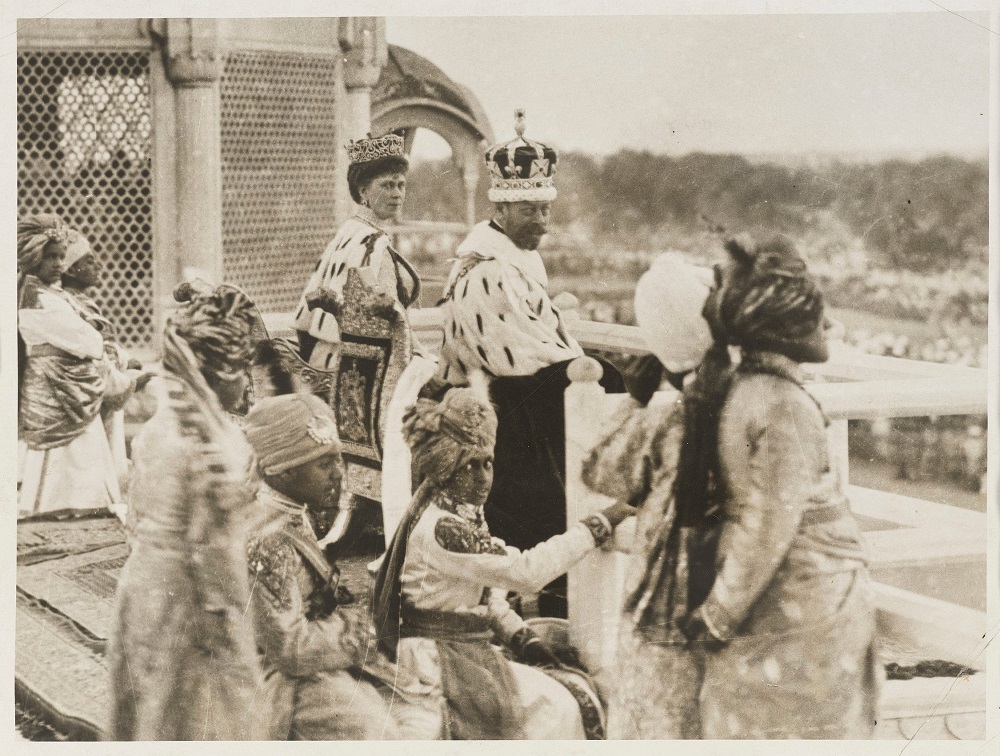
Ceremonial
The Indian durbar was the most elaborate ceremony in Britain’s imperial history and created a spectacle that was in marked contrast to the relatively modest events that were organised for members of the orders of knighthood while the King was at home.
This first installation to be held during the 20th century took place in Scotland a few months before the King left for India, when he assigned stalls to two knights of the Thistle on the same day in July 1911 on which he formally opened the chapel of the order in St Giles’ Cathedral. The Gazette did not report the Edinburgh ceremonial, but did publish details about the service in Westminster Abbey in July 1913 in connection with the first Bath installation to be held since 1812 (Gazette issue 28749).
The home ceremonial was seldom repeated during the remainder of the reign, in part because of the upheaval caused by the war. The Thistle had already started to dispense with the installation of its knights by the time the war began in the summer of 1914, while the Bath arranged only four more installations between the end of the war in 1918 and the close of the reign, but The Gazette did not report any of the events other than the gathering in 1913.
War honours
The procedure for administering the government during the King’s absence was not uniform after the Indian durbar, and The Gazette provided no reports about any counsellors of state being nominated to manage the royal authority during the course of the war, starting with the King’s first visit to the army in France over a few days in December 1914.
The war resulted in several additions being made to the British honours system, and The Gazette reported the creation of a series of decorations for officers, which were often presented personally by the King, consisting of the Military Cross for the army in December 1914 (Gazette issue 29024), and the Distinguished Flying and Air Force Crosses for the air force in June 1918 (Gazette issue 31674).
At this point in time, and until the system was reformed in 1993, the award of naval and military honours was based on an individual’s rank, and so a series of medals for non-commissioned officers and men was created to operate in parallel with the officers’ decorations. The war-time additions began in October 1914 with the Distinguished Service Medal for the navy, followed by the Military Medal in March 1916 for the army, and then the Distinguished Flying and Air Force Medals for the air force in June 1918. As usual, each of the war-time honours carried emblems that reflected the royal authority that underpinned the award, whether that was the King’s effigy and/or his cypher.
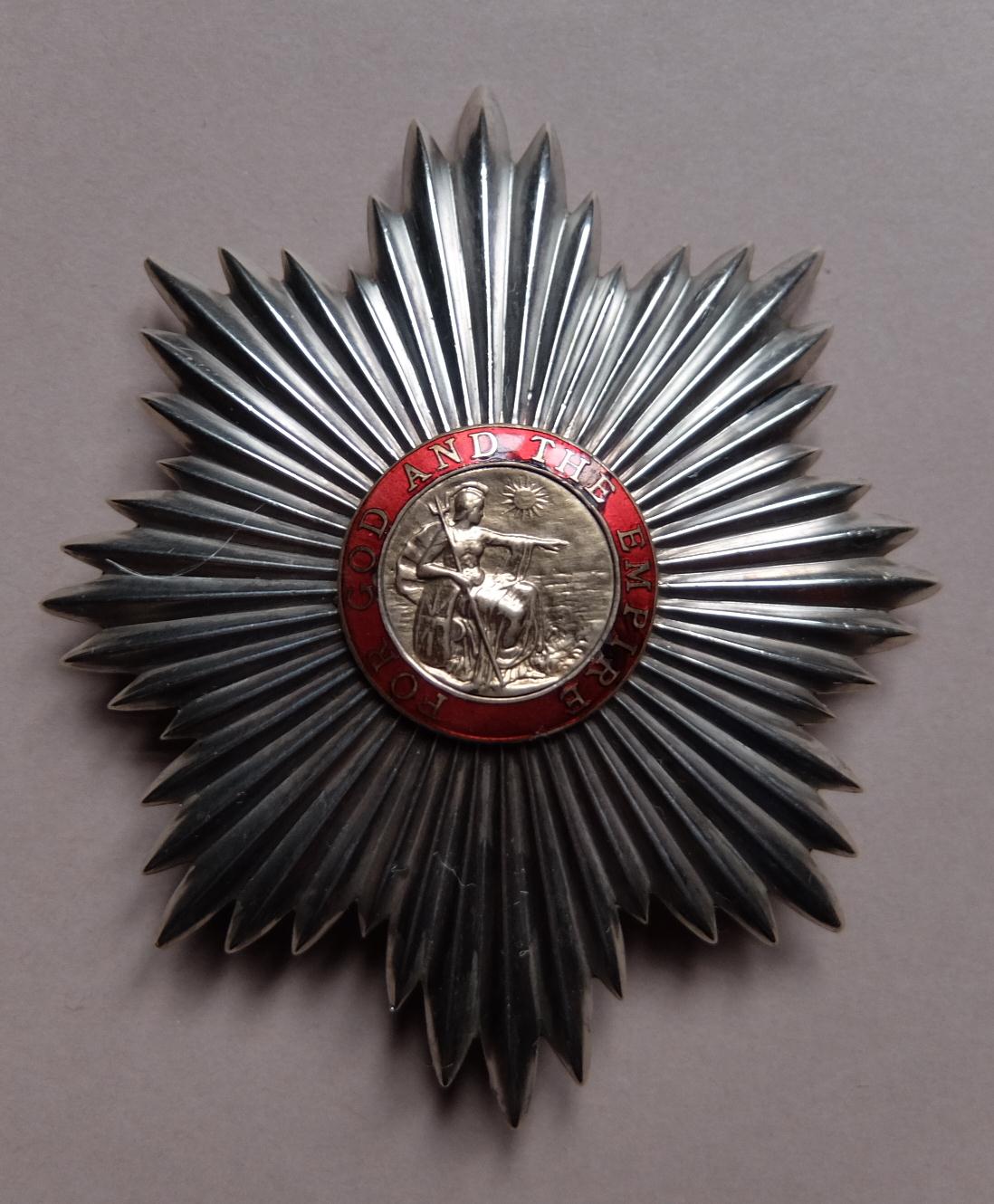
The most far-reaching changes were made in June 1917, when letters patent were issued under the great seal to create the Order of the British Empire, which could be used to reward services to the state, and a royal warrant was signed to institute the Order of the Companions of Honour to recognise work of national importance. The British Empire’s statutes showed the extent to which the royal function had to be delegated because it was unlikely that the King would visit any of the locations beyond the seas to invest members with their badges (which showed Britannia on one side and the King’s cypher on the other).
The investiture of members of the first two classes of the British Empire could be performed by “some distinguished person in our service or other person” (Gazette issue 30250), while revised statutes from December 1922 authorised the viceroy of India, and the governors-general of Australia, Canada, New Zealand and South Africa, to invest the senior members who were resident in those nations (Gazette issue 32781). The first British Empire investiture certainly had a more local flavour as it was performed by the King at Ibrox Park in Glasgow in September 1917, while similar ceremonies connected with the war-time order became an established part of the royal routine.
The large increase in the number of honours that were granted for services connected with the war led to the sovereign’s authority being delegated even within the United Kingdom, with the result that members of the royal family and the county lieutenants began to present decorations and medals. The King’s personal role in dealing with this aspect of the honours system came to represent a major commitment of his resources, and in August 1920 it was announced that no summons to be invested by him would be issued for awards ranking below the Distinguished Service Order, and that other recipients would receive the award from their lord lieutenant or by post.
Beyond the seas
A different form of honour was created for use in the overseas realms after the war, which operated in parallel with more conventional elements of the honours system, such as the Order of the British Empire.
The Gazette reported the royal warrant of April 1920 that created the King’s Medal for Native Chiefs, which was to be granted in Africa to “native chiefs or other native dignitaries” for their “zeal and loyalty” towards the King and the Empire (Gazette issue 32012). The decoration came in two grades and was similar to the original Kaisar-i-Hind Medal in India, in that it could be awarded by the governor or the other royal representative in the relevant colony or protectorate, subject to the approval of a secretary of state in London.
The King’s Medal carried his effigy with “a merchant vessel, plying, under the protection of a ship of war, outside a harbour illuminated by a tropical sun”, while the chain from which it was worn was decorated with the royal crown and cypher.
Three years later a more comprehensive system of honours was introduced in Africa and was soon extended to other parts of the Empire. In 1923 a distinction known as the Badge of Honour was created to reward loyal services in Uganda, which consisted of an oval badge that combined the King’s effigy with an emblem that was associated with the protectorate, in this case a crane.
The badge was granted by the governor of Uganda and was the first in a series of similar royal awards that were established for African nations during the reign, including awards for Kenya, Nigeria and Sierra Leone. The scheme was later used in other parts of the royal domain, starting with the Federated Malay Straits and the Straits Settlements in 1926, and then Hong Kong in 1929 and Fiji in 1935. Each badge combined the King’s effigy with the nation’s coat of arms, or another appropriate emblem, such as a lion for Kenya, the seal of Solomon for Nigeria, and an elephant for Sierra Leone.
The Badge of Honour continues to be awarded under the royal authority in some of the Commonwealth realms, and since 1954 the status of the local form of honour has been recognised by its inclusion in the official order of wear that is published from time to time by the Central Chancery of the Orders of Knighthood.
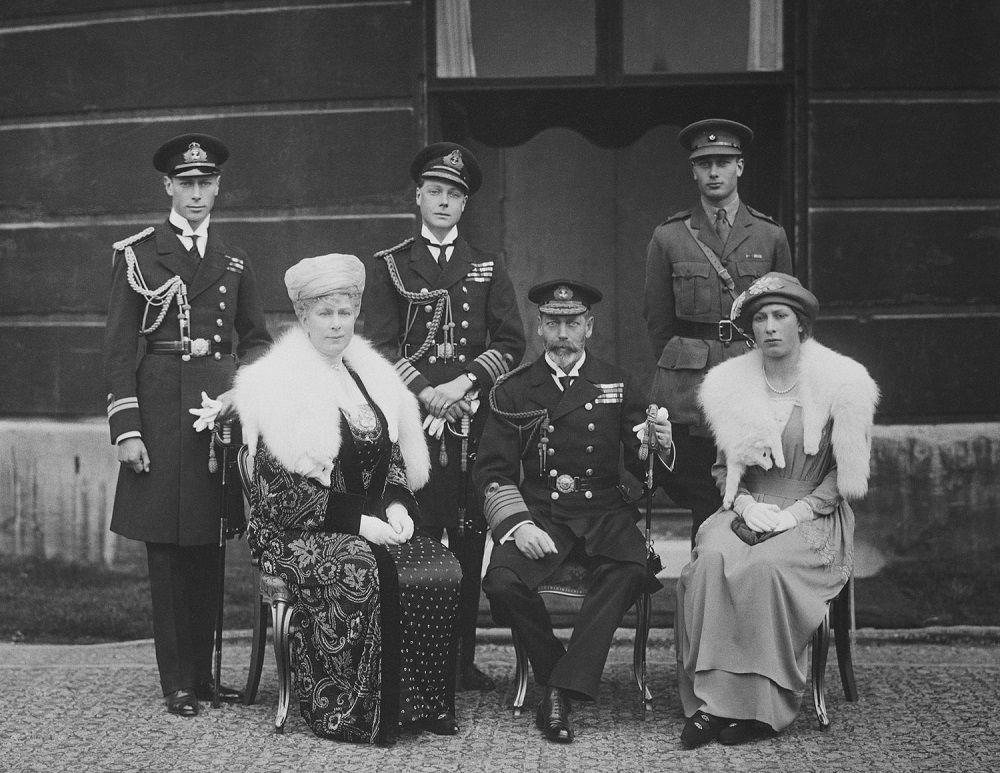
Counsellors of state
The Gazettes of the inter-war years reported the issue of one more patent to regulate the royal authority because of the absence of King George V, and two commissions that were needed to address his incapacity through illness.
The Gazette also noticed a royal warrant that introduced a badge that could be worn by knights that displayed a sword and spurs, which recalled the degree of knighthood, and the King’s role as the fountain of justice and honour.
The first nomination of counsellors of state to be gazetted since the India durbar of 1911 came in the mid-1920s, when the King planned a cruise in the Mediterranean. The trip led to a declaration in the Privy Council in March 1925, and to The Gazette providing the text of the draft letters patent (Gazette issue 33030). The durbar formula was adopted for the cruise and four counsellors were nominated, with the King’s son Prince Henry being joined by three officeholders: the archbishop of Canterbury and the lord chancellor, together with the prime minister rather than the lord president.
The 1925 document was drafted in similar terms to the durbar patent, with the customary ban on dealing with the peerage, but with nothing being said about other honours. There can have been no doubt that the counsellors had no authority to create or revise or award any British honours, as that would be contrary to the general tenor of the patent that required them not “to act in any matter or things on which it [...] appears to them that [the sovereign’s] special approval should be previously obtained”.
Royal health
The next patent was drafted because of the King’s illness, as he nominated counsellors of state to act in December 1928 (Gazette issue 33444). The number was increased from four to six, and comprised the Queen, the Prince of Wales, the Duke of York, and the holders of the same offices that were used three years earlier, namely the archbishop of Canterbury, the lord chancellor, and the prime minister.
The governance procedures were revisited in June 1929, when the King declared that his health had been restored, but that “for the better preservation of his health and strength it is expedient that for the time being he should not resume the exercise of all the functions delegated [...] and that he should be relieved of the burden of transacting certain matters and things” (Gazette issue 33505). The six counsellors were retained, but a different approach was taken to define what they could do, as a schedule determined the documents the counsellors could sign and the matters they could deal with. It covered a wide range of issues, including the judicial system, the armed forces and diplomatic and consular offices.
The schedule also dealt with the award of honours, as the counsellors could approve and sign “warrants submitted by the Central Chancery of the Orders of Knighthood”. This mainly involved appointments to the orders, of which the largest was the Order of the British Empire.
The text of state documents was amended to reflect the King’s situation and, for example, the warrant dispensing with the personal investiture of a member of the Order of the Bath was signed by the Prince of Wales and the Duke of York, and the document carried the additional phrase “On behalf of His Majesty” against their signatures.
Other official documents were revised to signify the delegated authority, as happened with the commission appointing Wilfrid Normand to be the solicitor general for Scotland in May 1929 (Gazette issue 33492). The document stated that his appointment was approved on behalf of the King, and was superscribed “Edward P., Stanley Baldwin and Hailsham”, the signatures of the Prince of Wales, the prime minister and the lord chancellor. Normand attended Accession Councils in 1936 and 1952, and had a role in deciding who should carry the golden spurs at the next coronation.
The counsellors conducted some routine royal ceremonial, as in February 1929 when one of the lords of appeal was sworn in as a member of the Privy Council, and in July when the Prince of Wales performed one of the bi-annual investitures and presented the insignia of the Order of Merit to the novelist John Galsworthy.
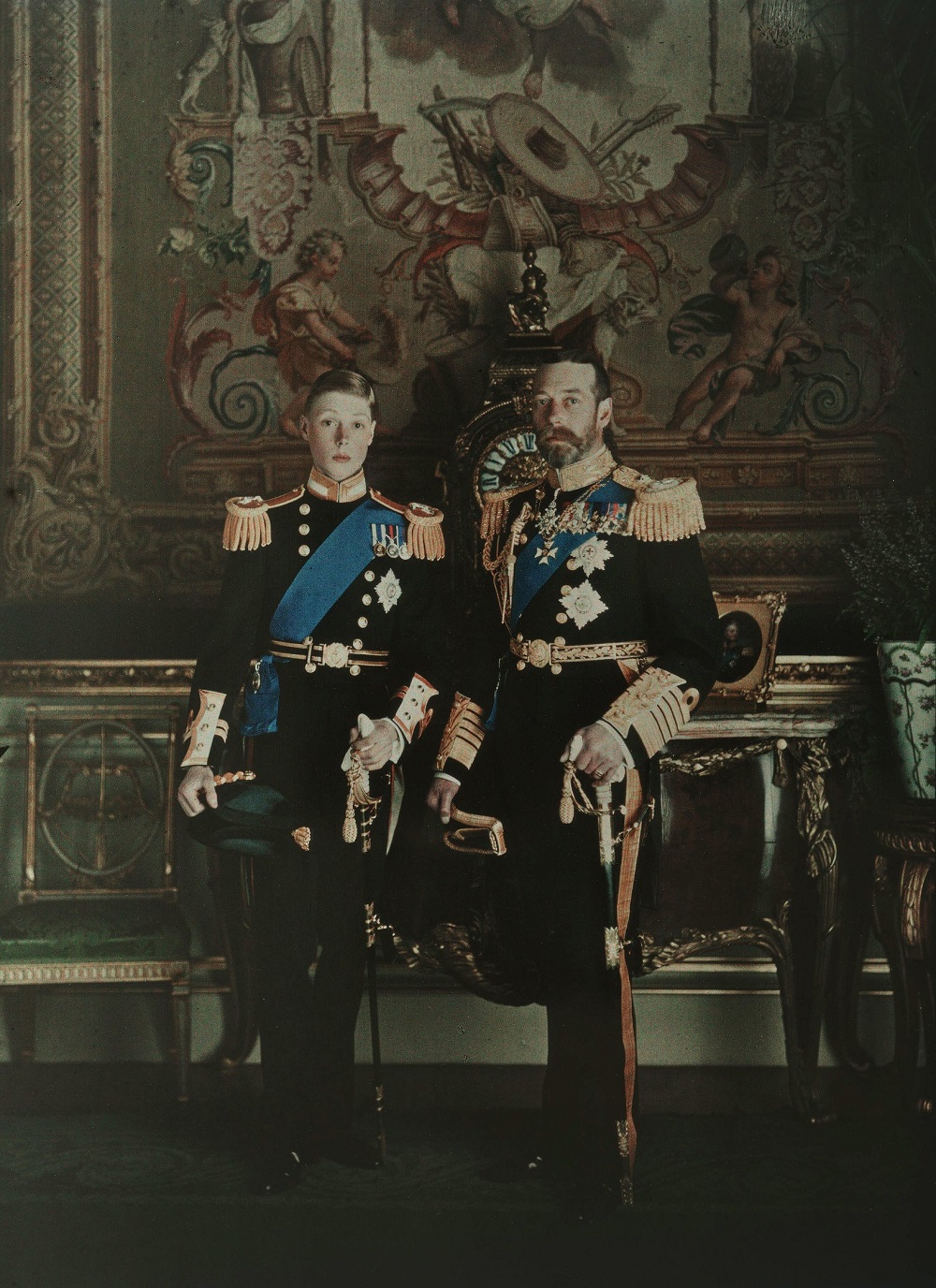
Honour of knighthood
The Prince of Wales also conferred the honour of knighthood during 1929. The right to knight one of the King’s subjects was always closely controlled, although it had been delegated to a few officer-holders in the past, as in the case of the lord lieutenant in Ireland, and the viceroy in India.
The Gazette also contained occasional references to members of the royal family acting on the King’s behalf, but not in the capacity of a counsellor of state. In December 1926, for example, letters patent were issued to allow the Duke of York to confer the honour during an imperial tour, which enabled him to knight the lord mayors of Adelaide and Melbourne at Canberra on the occasion of the inauguration of the Australian capital (Gazette issue 33292).
The King’s role in the degree of knighthood had been acknowledged during his coronation, when the lord great chamberlain touched his heels with the golden spurs to indicate possession of the authority to bestow rewards upon deserving subjects, and he had also received a sword as part of the ritual, at which point the archbishop of Canterbury had said:
“With this sword do justice, stop the growth of iniquity, protect the holy church of God, help and defend widows and orphans, restore the things that are gone to decay, maintain the things that are restored, punish and reform what is amiss, and confirm what is in good order: that doing these things you may be glorious in all virtue.”
The long association between the sword and spurs and the dignity of knighthood was recognised during the 1920s when, largely thanks to the campaigning work of the Imperial Society of Knights Bachelors (which was established in 1904 to protect its members’ rights), knights were granted the right to wear a badge in the same way as the star of, say, the Order of the Garter.
The King’s warrant brought the image of the sword and spurs to a much wider audience than the coronation service, as it allowed knights to wear an oval red medallion, with a central design that placed a golden sword between two spurs (Gazette issue 33155). The warrant was dated 21 April 1926, which was the birthday of Princess Elizabeth of York – later Queen Elizabeth II.
Imperial conference
Six months after the King signed the knight bachelors’ warrant, his ministers attended an imperial conference in London that examined inter-imperial relations, and in November 1926 issued the statement that Great Britain and the dominions were autonomous countries within the British Empire, equal in status, in no way subordinate one to another in any aspect of their domestic or external affairs, though united by a common allegiance to the Crown, and freely associated as members of the British Commonwealth of Nations.
The conference noted that the King’s title “hardly accorded with the altered state of affairs arising from the establishment of the Irish Free State as a dominion” and concluded “that a slight change is desirable”. That change was implemented by means of the Royal and Parliamentary Titles Act, which received royal assent in April 1927 (Gazette issue 33266), and led to a proclamation that adopted the conference’s formula of making George king of “Great Britain, Ireland and of the British Dominions beyond the Seas” rather than king of “the United Kingdom of Great Britain and Ireland and […]” (Gazette issue 33274).
The proclamation was made on 13 May 1927 by and with the advice of the Privy Council, which met at Buckingham Palace on that day, but there was no large gathering of counsellors as there had been when the King’s original titles were proclaimed in 1910, and instead only four members were present, as Lord Balfour – the former prime minister and chairman of the conference’s inter-imperial relations committee – was joined by the lord chamberlain, the secretary of state for Scotland and the first lord of the Admiralty.
The King’s titles were altered as required, as in the warrants that were issued for the orders of knighthood, and in the new great seal. Neither the 1927 Act nor the partition of Ireland affected the King’s cypher, and so there was no need for any revision to be made to any insignia.
Dominion legislation
The imperial conference of 1926 led to a gathering of representatives in London between October and December 1929 to discuss the operation of dominion legislation, which recommended draft provisions to be considered by the Westminster Parliament, and suggested that as the members of the Commonwealth were united by a common allegiance to the Crown then the succession to the throne and the royal style and titles “are matters of equal concern to all”, and that the position should be recognised by means of a convention and appear as a formal recital or preamble in the proposed act.
The recommendations were largely adopted by the imperial conference of 1930 and resulted in the Statute of Westminster that was passed on 11 December 1931, which addressed the King’s role as a symbol of what the act described as the nations that were still said to be united by their allegiance to the Crown, even although Canada, the Irish Free State and South Africa had taken steps to remove or curtail the power of the royal authority, and had either wholly or partly stopped using the British honours system.
The 1931 statute limited the extent to which the United Kingdom’s parliament could pass legislation affecting the dominions, and the preamble explained that any alteration in “the law touching the succession to the throne or the royal style and titles” should in the future “require the assent as well of the parliaments of all the dominions as of the parliament of the United Kingdom.” India and the colonies and protectorates were given no formal role in determining the succession, even although some of those nations had larger populations and were of greater economic and political significance within the Empire than the relatively marginal dominion of Newfoundland.
The impact of the legislation on the exercise of the royal authority, as well as its relevance to the succession to the Crown, was complex and varied from dominion to dominion, but the Statute of Westminster would become a material consideration less than five years later when King Edward VIII decided to renounce the throne.
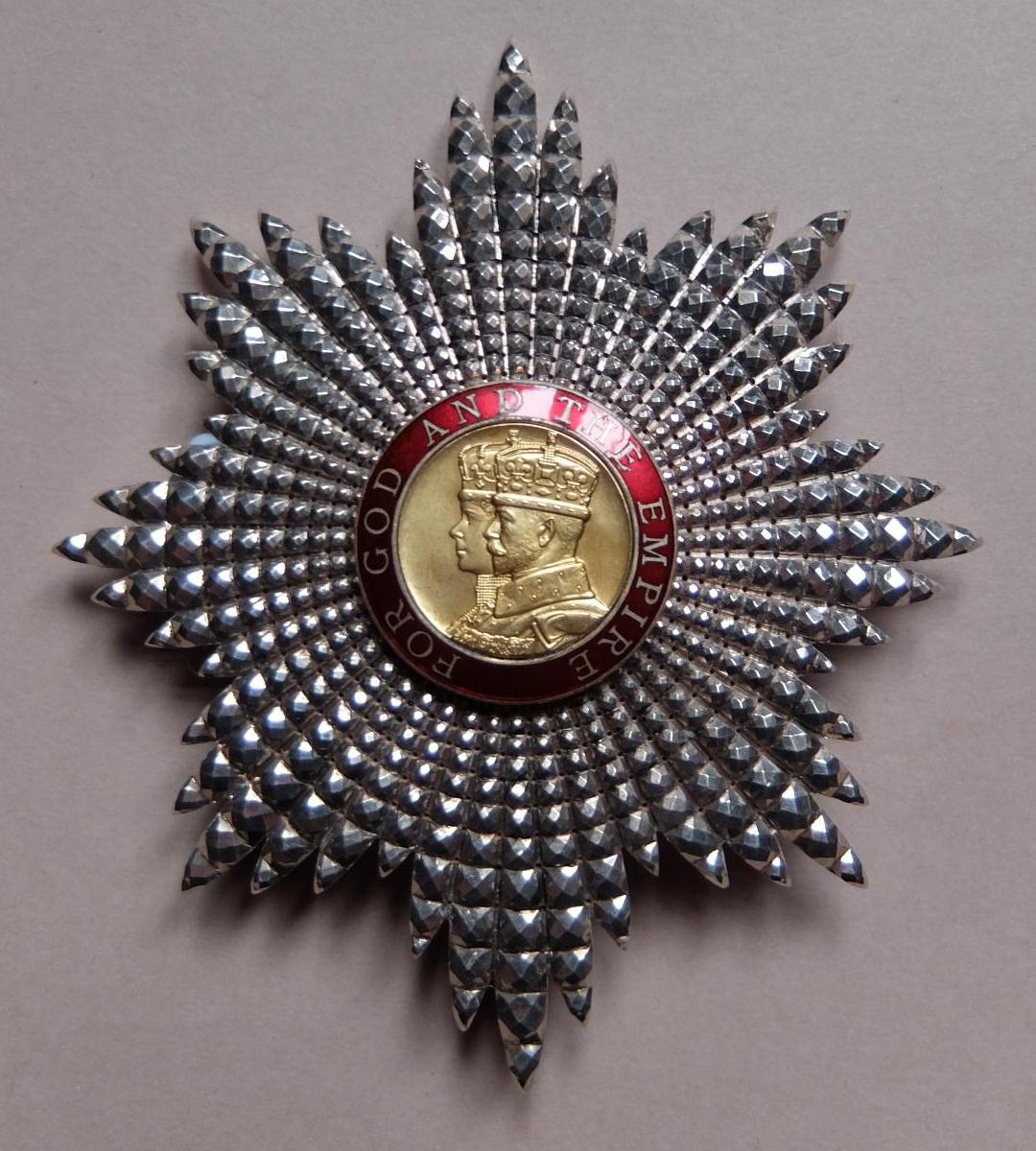
Jubilee Medal
With the notable exception of the situation in Ireland, the British commonwealth of nations retained much of its pre-war structure by the time King George V celebrated the 25th anniversary of his accession in May 1935.
The occasion was marked by the issue of a silver jubilee medal, which was the first time that such an anniversary had been commemorated in this way and established a precedent that would be followed by Queen Elizabeth in 1977.
A number of other official medals were issued in connection with the jubilee. One was struck by the Royal Mint that showed the effigies of the King and Queen by the artist Percy Metcalfe, which replaced Britannia in the badges and stars of the Order of the British Empire in 1937, and where they still appear today.
January council
The final delegation of the royal authority was approved at Sandringham House in Norfolk on 20 January 1936. The Gazette explained that the King “having again been stricken by illness” was “unable for the time being to give due attention to the affairs of the realm”, and that a draft commission was prepared for making counsellors of state (Gazette issue 34247).
The commission referred to the customary powers that could be exercised under the authority of the great seal, and on this occasion the counsellors were limited to the Queen and her sons, and the earlier practice of relying on the services of the archbishop of Canterbury, the lord chancellor and the prime minister was discontinued.
The draft patent retained the schedule that was introduced in 1929 to identify the type of documents the counsellors could approve, but the measures that were put in place were soon overtaken by events, as the King died later the same day (Gazette issue 34244).
About the author
Russell Malloch is a member of the Orders and Medals Research Society and an authority on British honours.
See also
Gazette Firsts: The history of The Gazette and royal coronations
The Demise of Queen Elizabeth II and Accession of King Charles III
Queen Elizabeth II - In Memoriam
Images (in order of appearance)
The Gazette
Royal Collection Trust / © His Majesty King Charles III 2023
Royal Collection Trust / © His Majesty King Charles III 2023
Royal Collection Trust / © His Majesty King Charles III 2023
Russell Malloch
Royal Collection Trust / © His Majesty King Charles III 2023
Royal Collection Trust / © His Majesty King Charles III 2023
Russell Malloch
Publication date: 1 February 2023
Any opinion expressed in this article is that of the author and the author alone, and does not necessarily represent that of The Gazette.
